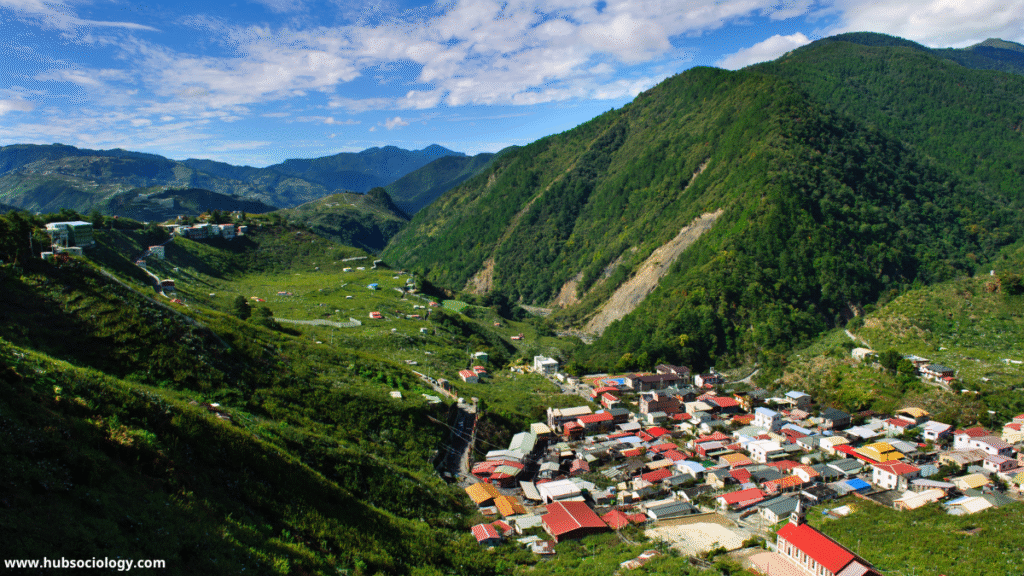Introduction on Tribes in India
One of the world’s most diversified tribal communities resides in India. The Indian Constitution recognizes more than 700 Scheduled Tribes (STs), which make up over 8.6% of the nation’s population (Census 2011). Anthropological and administrative studies of tribes in India provide crucial insights into their socio-cultural systems, economic conditions, political organization, and the impact of state policies on their lives. From a sociological perspective, understanding tribal communities involves analyzing their traditional social structures, kinship systems, religious practices, and their interaction with modernity and governance.
This article explores the anthropological dimensions of Tribes in India, the administrative frameworks governing them, and the sociological implications of tribal development policies. It also looks at the difficulties that modern Indian tribal people face.

Anthropological Study of Tribes in India
1. Definition and Characteristics of Tribes
Anthropologically, Tribes in India are considered as social groups with distinct cultural, linguistic, and territorial identities. They often have:
- Egalitarian social structures (as opposed to caste-based hierarchies).
- Strong kinship and clan systems governing marriage, inheritance, and social obligations.
- Subsistence economies based on hunting-gathering, shifting cultivation, or pastoralism.
- Animistic or nature-centric religious beliefs, though many have adopted Hinduism, Christianity, or other religions.
In India, tribes are officially classified as Scheduled Tribes under Article 342 of the Constitution, which entitles them to affirmative action and protective measures.
2. Major Tribal Groups and Their Distribution
The tribal population of India is dispersed among many regions:
- Central India: Gond, Bhil, Santhal, Munda, Oraon.
- North-East India: Naga, Khasi, Garo, Mizo, Bodo.
- Southern India: Todas, Chenchus, Irulas.
- Western India: Warli, Bhils.
- Andaman & Nicobar Islands: Jarawa, Sentinelese, Onge.
Each tribe has unique cultural practices, languages, and social organizations, making India’s tribal landscape highly diverse.
3. Social Structure and Kinship
India’s tribal societies have a variety of kinship structures:
- Matrilineal tribes (e.g., Khasi, Garo) where descent and inheritance are traced through the mother.
- Patrilineal tribes (e.g., Gond, Bhil) where lineage follows the father’s side.
- Clan-based exogamy, where marriage within the same clan is prohibited.
These kinship structures influence social cohesion, economic cooperation, and political organization within tribes.
4. Religion and Cultural Practices
Tribal religions are often animistic, involving worship of nature spirits, ancestors, and local deities. Rituals, dances, and festivals (e.g., Sarhul of Santhals, Hornbill Festival of Nagas) play a significant role in tribal identity. However, many tribes have undergone religious conversion (to Hinduism, Christianity, or Islam), leading to cultural transformations.

5. Economic Systems
Traditionally, tribes practiced:
- Hunter-gatherer economy (e.g., Jarawa, Sentinelese).
- Shifting cultivation (Jhum) (e.g., Naga, Mizo).
- Sedentary agriculture and pastoralism (e.g., Bhil, Gond).
With modernization, many tribes have been integrated into wage labor, mining, and industrial work, often facing exploitation and displacement.
Administrative Study of Tribes in India
1. Constitutional Provisions for Tribes
The Indian Constitution offers native tribes a number of protections, including:
- Article 342: Recognition of Scheduled Tribes.
- Fifth and Sixth Schedules: Autonomous governance in tribal-majority areas.
- Article 46: Advancement of STs’ economic and educational interests.
- PESA Act (1996): Empowers Gram Sabhas in tribal areas for self-governance.
2. Government Policies and Welfare Schemes
Several policies aim at tribal development:
- Tribal Sub-Plan (TSP): Allocates funds for tribal welfare.
- Forest Rights Act (2006): Recognizes land rights of forest-dwelling tribes.
- National Commission for Scheduled Tribes (NCST): Monitors safeguards for STs.
- Eklavya Model Residential Schools: Provides quality education to tribal children.
Despite these measures, implementation gaps remain due to bureaucratic inefficiencies and corruption.
3. Challenges in Tribal Administration
- Land Alienation: Displacement due to dams, mining, and industrialization (e.g., Narmada Bachao Andolan).
- Naxalism and Conflict: Tribal areas in Central India are affected by Maoist insurgency due to neglect and exploitation.
- Cultural Erosion: Modernization and forced assimilation threaten tribal traditions.
- Health and Education Disparities: Poor healthcare and literacy rates persist in tribal regions.
Sociological Perspectives on Tribal Issues
1. Tribal Identity and Modernization
Sociologists like G.S. Ghurye and Verrier Elvin debated whether tribes should assimilate into mainstream society or retain autonomy. While Ghurye viewed tribes as “backward Hindus,” Elvin advocated for protecting tribal culture. Today, globalization and state policies continue to reshape tribal identities.
2. Tribal Movements and Resistance
Tribal movements in India reflect struggles for rights and autonomy:
- Jharkhand Movement: Led to the creation of Jharkhand state for tribal self-rule.
- Narmada Bachao Andolan: Fought against displacement due to dams.
- Forest Rights Movements: Demand recognition of tribal land rights.
These movements highlight the conflict between development and tribal rights.
3. Gender Dynamics in Tribal Societies
While some tribes have relatively egalitarian gender roles (e.g., Khasi matriliny), others face patriarchal influences due to external cultural pressures. Tribal women often bear the brunt of displacement and economic hardships.
4. Impact of Globalization
Globalization has brought both opportunities (education, employment) and threats (land grabbing, cultural homogenization) to tribal communities. Migration for work has disrupted traditional social structures.

Conclusion on Tribes in India
The anthropological and administrative study of tribes in India reveals a complex interplay between tradition and modernity. While constitutional safeguards and welfare schemes aim to uplift tribal communities, challenges like displacement, cultural erosion, and administrative apathy persist. A sociological understanding of tribal issues emphasizes the need for inclusive development that respects tribal autonomy and identity. Future policies must prioritize participatory governance, sustainable development, and cultural preservation to ensure justice for India’s tribal populations.
Do you like this this Article ? You Can follow as on :-
Facebook – https://www.facebook.com/hubsociology
Whatsapp Channel – https://whatsapp.com/channel/0029Vb6D8vGKWEKpJpu5QP0O
Gmail – hubsociology@gmail.com
Topic Related Questions on Tribes in India
5-Mark Questions on Tribes in India (Short Answer Type)
- Define ‘tribe’ from an anthropological perspective.
- List five major tribal groups in India and their regions.
- What is the significance of the Fifth and Sixth Schedules in the Indian Constitution for tribal administration?
- Explain the concept of ‘Jhum cultivation’ in tribal economies.
- What are the key provisions of the Forest Rights Act (2006) for tribal communities?
- How does the kinship system function in matrilineal tribes like the Khasi?
- What role does religion play in tribal societies?
- Name two tribal movements in India and their primary demands.
- What is the Tribal Sub-Plan (TSP)?
- How has globalization impacted tribal cultures in India?
10-Mark Questions on Tribes in India (Descriptive Answer Type)
- Discuss the social structure and kinship patterns among Indian tribes with suitable examples.
- Analyze the impact of land alienation and displacement on tribal communities in India.
- Examine the role of the PESA Act (1996) in tribal self-governance.
- Compare the anthropological views of G.S. Ghurye and Verrier Elwin on tribal integration vs. isolation.
- Critically evaluate the effectiveness of government welfare schemes for tribal development.
- How do tribal economies differ from mainstream economies in India?
- Discuss the challenges faced by tribal women in contemporary India.
- Explain the relationship between tribal movements and identity politics in India.
- What are the causes and consequences of Naxalism in tribal-dominated regions?
- How has modernization affected the cultural practices of Indian tribes?
15-Mark Questions on Tribes in India (Essay/Long Answer Type)
- Critically analyze the anthropological and administrative approaches to tribal development in India. Discuss the gaps between policy and implementation.
- Examine the impact of industrialization and mining activities on tribal livelihoods. Suggest measures for sustainable development.
- Discuss the constitutional safeguards for Scheduled Tribes in India. How effective have they been in ensuring tribal welfare?
- Evaluate the role of tribal movements in shaping India’s tribal policies, with reference to movements like Jharkhand and Narmada Bachao Andolan.
- How do gender dynamics operate in tribal societies? Compare matrilineal and patrilineal tribal groups in India.
- “Globalization is a double-edged sword for tribal communities in India.” Discuss with sociological perspectives.
- Analyze the challenges of education and healthcare in tribal areas. What policy reforms are needed?
- Discuss the Forest Rights Act (2006) and its significance in protecting tribal rights over land and resources.
- How does the Indian state balance tribal autonomy with national integration? Refer to the Fifth and Sixth Schedules.
- Examine the role of anthropology in understanding tribal issues and shaping administrative policies in India.
